Teta, which means grandmother in Arabic, is often every Egyptian child’s first storyteller; the one who opens the door to a world where the past slips easily into the present, stretching time as if it were something she could hold.
In her wrinkled hands, the same hands that once wrapped around ours as the gold bangles on her wrists chimed softly, she curated her own museum of Egypt. Through her words and vivid imagery, she preserved pieces of heritage that never make it into digital archives, and stories held not in galleries, but in a grandmother’s heart.
Over the years, countless attempts have been made to preserve our heritage, from digital platforms and online museums to lectures, exhibitions, and fleeting physical installations that showcase Egypt’s or the Arab world’s past for a moment in time. But as soon as someone leaves the room or scrolls past the screen, that fragment of memory slips away again, disappearing just as quickly as it appeared.
Yet a new generation of Egyptian creatives, like Dutch-Egyptian illustrator and storyteller Naomi Attia, is rethinking how heritage can endure. Through her illustrated zine, Al Khorafa (Superstitions), now sold at local design studio Rizo Masr, she gives these traditions a life beyond fleeting exhibitions or a single scroll, allowing them to live in someone’s home, tucked into bags or suitcases, or resting on a coffee table as a book to be revisited, cherished, and admired again and again.
Rather than simply asking, “How can we protect our culture?” Attia asks, “How can we return to the days when our grandmothers told us stories, passing them from one generation to the next?”
“In the Global South, we retold the same stories again and again, and they lived across generations. But now, we’ve lost that,” Attia tells Egyptian Streets. “What I love about a zine is that people can flip through it and suddenly remember all those stories from their grandmother or grandfather.”
“And I hope that when someone has it in their home and friends or family come over, they can share it, sparking a conversation about their culture. It creates a dialogue about identity and heritage.”
Protecting traditional storytelling
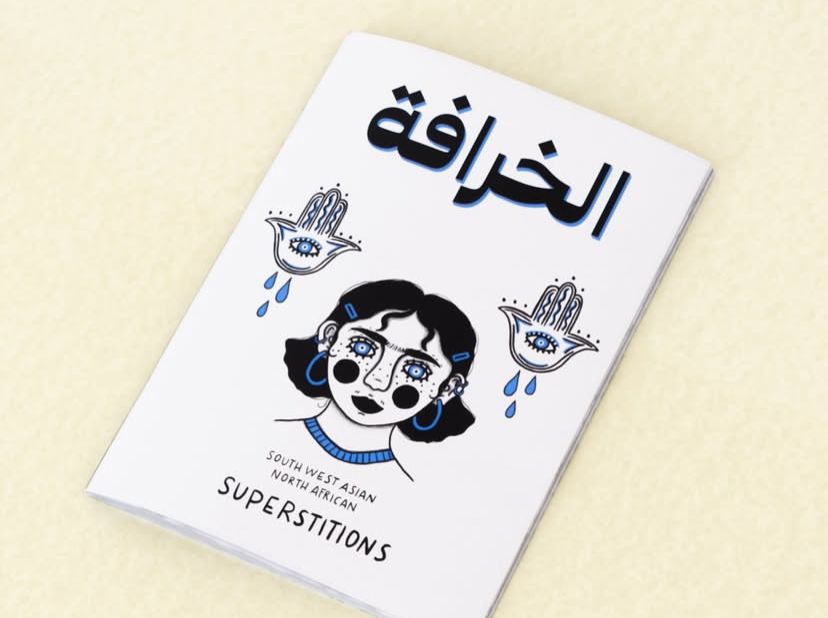
Many cultures across Africa and the Arab world carry deep-rooted oral storytelling traditions. Yet these stories are not random; they are intentional practices meant to protect culture and pass knowledge, history, and experiences from one generation to the next.
Storytelling is never just about words; it lives in the voice, the movement of the hands, the gestures of the face, and the creative imagery and metaphors that, even if not literally true, help simplify and illuminate the story’s message.
Instead of simply reading a story aloud, the oral storyteller uses these tricks and metaphors to make the listener feel shocked, moved, or entertained, and, ultimately, to leave them wanting more.
Growing up in the Netherlands, Attia’s bond with Egypt grew slowly, shaped by memories and a nostalgia for the storytelling traditions of her heritage. This connection became the heart of her zine project, which dives into the ‘superstitious’ stories shared by older Arab generations, stories that, she realized, are far more meaningful and layered than the label ‘superstition’ suggests.
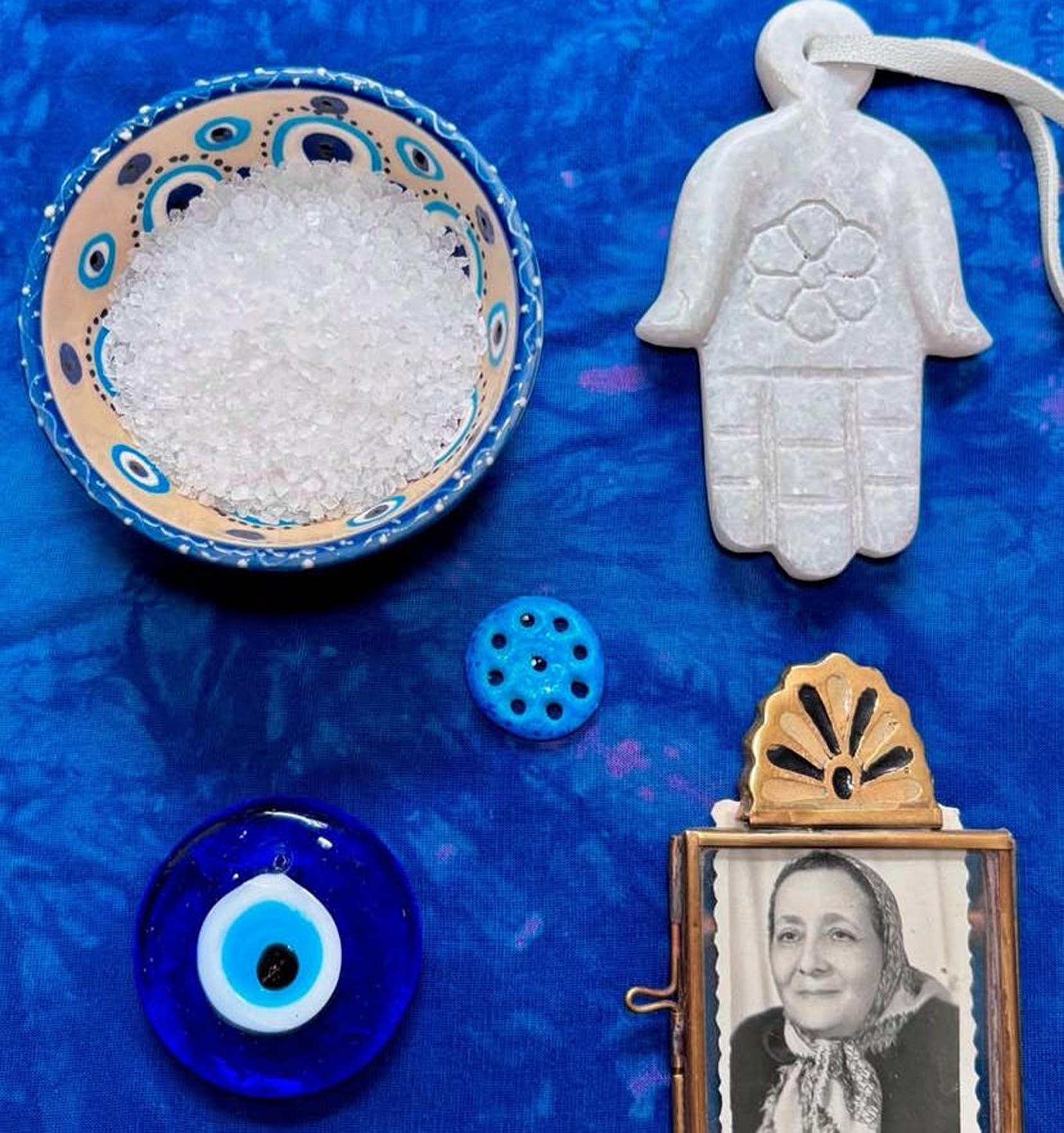
At first, these stories felt ‘uncool’ or even embarrassing, especially in a Western context that often dismisses them as outdated or backward. But over time, Attia came to see them as a sophisticated form of storytelling, created with the intention to reflect the culture’s own unique way of communicating.
“When I first came to the Netherlands, it wasn’t common to feel proud of your own culture,” she explains. “There was this pressure to blend in; you were often told not to mention that you’re Muslim or where you come from, or you’d risk facing racist remarks. To be accepted, you learned to hide parts of yourself.”
But instead of yielding to that pressure, Attia chose the opposite path, embracing her culture openly and proudly, even in the face of forces that seek to erase her identity. “I am afraid that there are going to be generations that are going to forget their heritage, and I already see it happening,” she reflects.
To safeguard her ancestors’ heritage and traditional storytelling, she looked to the ways Arabs create and engage with culture, rather than the Western approaches that rely heavily on lectures or museum exhibitions.
Tracing the layers behind superstitions
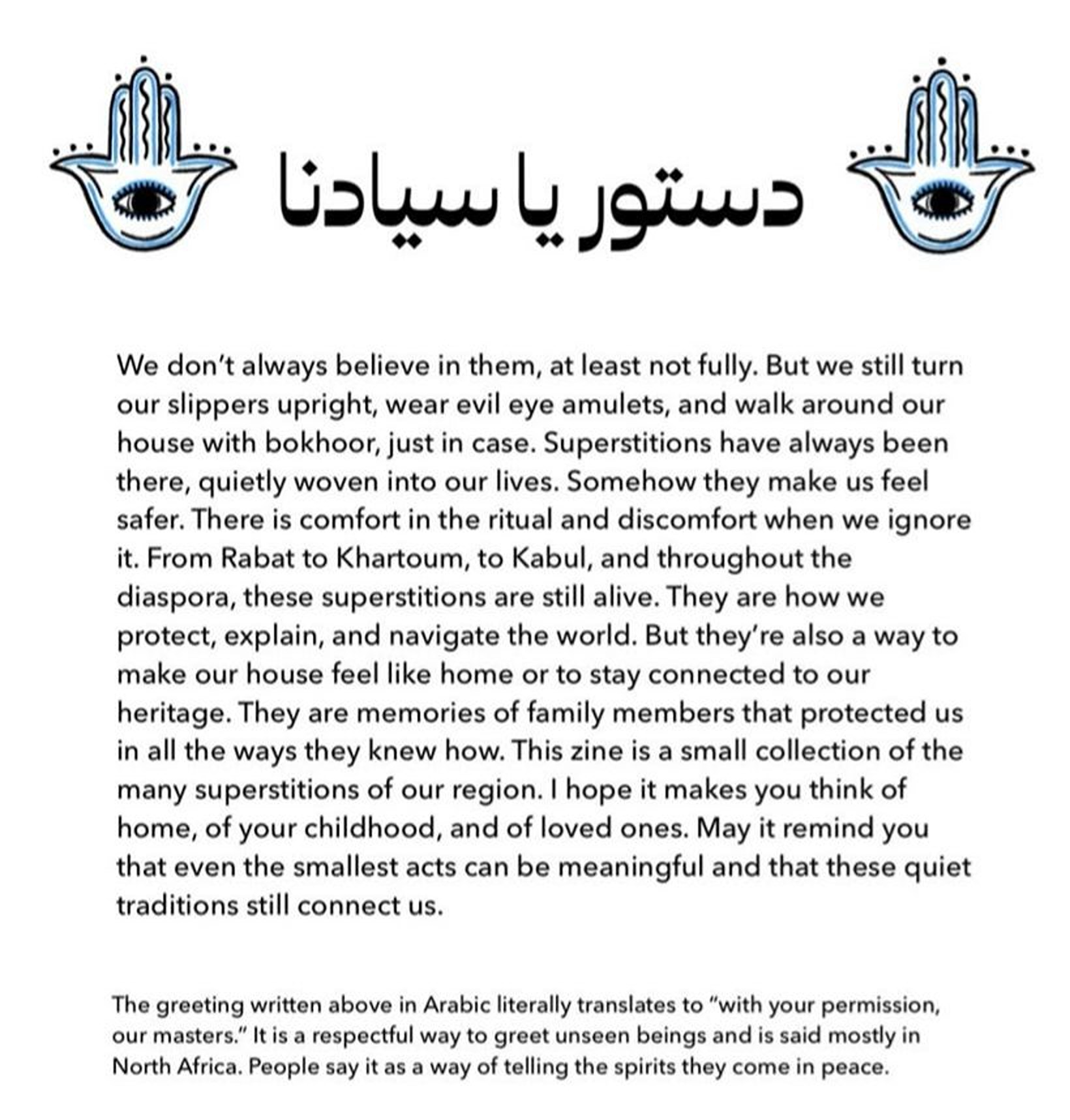
In Arab traditions, culture lives in stories rich with metaphors and imagery, passed down and experienced in more intimate, layered ways. Yet these traditions were slowly erased from cultural memory due to colonialism.
For centuries, much of North Africa and the Arab world was subjected to colonial rule. Colonial powers imposed systems that framed local cultures as “backward” or “uncivilized,” erasing or devaluing traditions, languages, and practices.
Colonization did not just dominate land and resources; it sought to rewrite cultural memory, teaching generations to see their own heritage as inferior.
“In the time when we were colonized as a region, there were these camps, especially the French set up, which they called ‘civilization camps.’ They put people in these camps to ‘civilize’ them. You see this throughout the world with colonization; the same techniques were applied everywhere,” Attia explains.
“This doesn’t mean that we have to go back in time or believe in everything from our past, such as these superstitions. I don’t believe in them, but it’s still important to know them. They’re a piece of our history,” she says. “Just like how we can visit the pyramids and appreciate them without needing to believe in them, superstitions are part of the cultural memory.”
Superstitions fall into that same colonial mindset; the notion that because we believed in them, we were ‘backward,’ and needed someone to show us the “right” way. This way of thinking did not end with colonial times; it persists even today.
“Within these superstitions, you can see so much of our culture and history. Take the simple superstition about having your shoes upside down. Scholars believe that because many of us come from desert cultures, shoes left upside down were perfect hiding spots for snakes or scorpions,” Attia explains.
“So there’s direct nostalgia, but also a lesson embedded in the story.”
These superstitions do more than show us how our ancestors lived; they also reveal how they communicated with one another through stories. Even when a superstition feels unreal or distant from our modern world, it still reflects the environment and experiences of the people who created it.
“People remember lessons better when they’re told as stories, especially children. You don’t just say, ‘don’t put your shoes upside down.’ You build a story around it,” she adds.
“A lot of these superstitions were cautionary, not meant to be taken literally. But they teach, they preserve memory, and they connect us to the way our ancestors lived, thought, and communicated with the world around them.”
Shaping a new Arab aesthetic
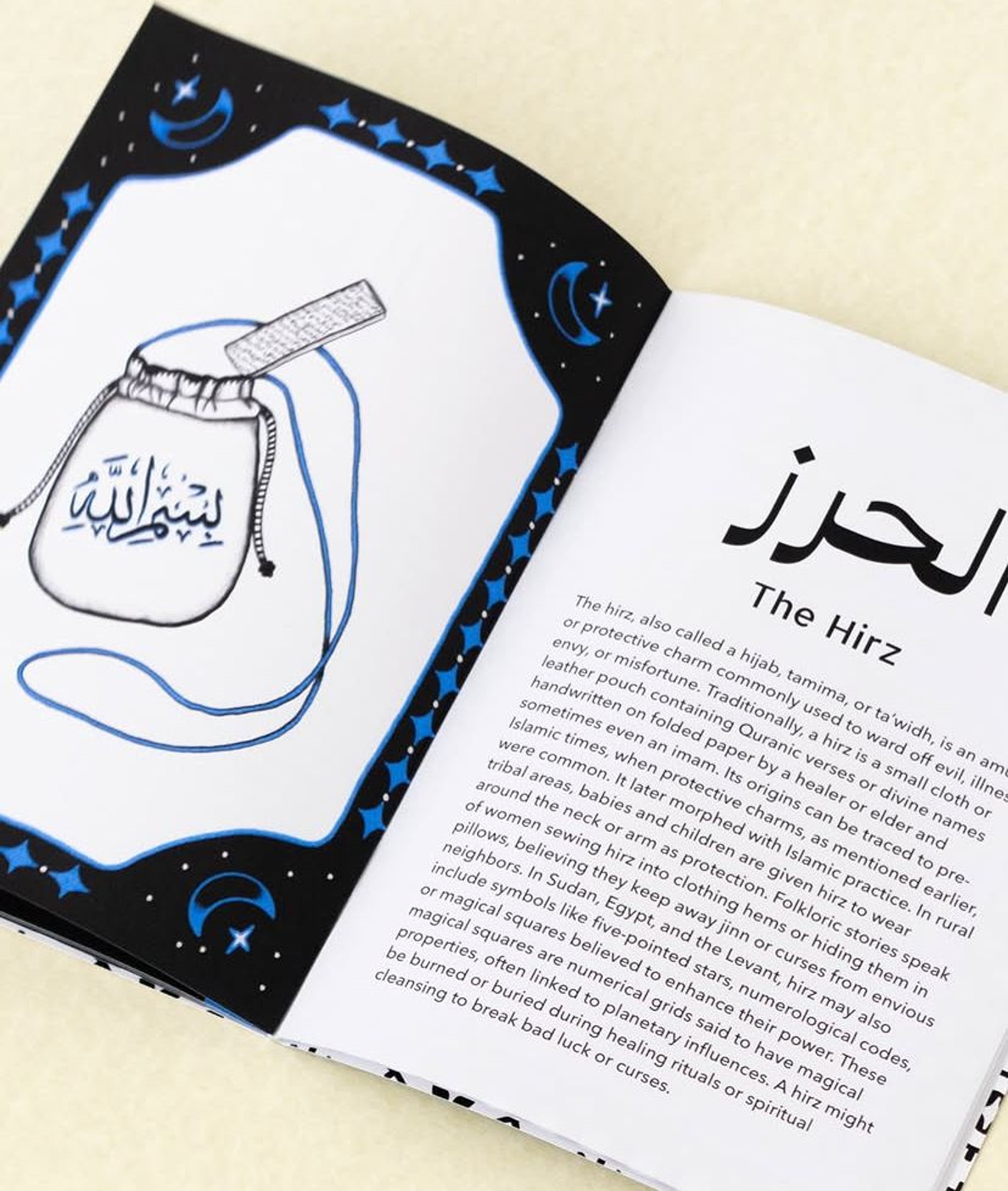
Arab aesthetics are often reduced to calligraphy, but today, young illustrators like Attia are pushing far beyond that. They’re reclaiming physical features, decolonizing the way Arab bodies and visuals are represented, and shaping a visual language that is entirely their own.
Attia’s fascination with archival material shapes her approach to modern Arab aesthetics, drawing inspiration from everyday objects, such as schoolbooks, tickets, and posters, which shaped how generations saw themselves.
Essentially, her illustrations become an act of remembering and retrieving lost visual languages to inspire new ones.
“Recently, I went to Egypt, and I found this paperwork archive. They had posters, old tickets, books, and some educational books,” she says. “What I really liked about these is that the format is very engaging. If you just have something with solely text, you tend to lose people. But when it’s broken up by illustrations, your eye has different things to focus on.”
For Attia, these archives are not about nostalgia for nostalgia’s sake. She sees them as maps toward reclaiming a visual language that feels rooted, distinct, and entirely our own; an intentional stance against a global mainstream culture that can often feel too familiar and predictable.
Another way she resists that global visual homogeneity is by reshaping how we understand beauty, particularly Arab and African beauty ideals. Aware that beauty standards are formed through repetition and exposure, she uses illustration to slowly rewire those inherited perceptions, allowing viewers to rethink what they have been conditioned to see as ‘normal’.
“In the Arab world, especially for women with colored eyes or straight hair, we call them ‘colored eyes’ and they get a lot of compliments,” she says. “Growing up, people would tell me, ‘You’re so pretty because you have straight hair,’ and it was always Western beauty standards.”
“So in my illustrations, on purpose, I draw black and brown eyes, because there isn’t enough representation of those features. I draw prominent noses, different textured hair, unibrows, even a little mustache hair,” Attia adds.
Through her illustrations, she celebrates the features many were once taught to hide, shifting the visual culture so that what was once marginalized becomes ordinary, recognizable, and even aspirational.
“Sometimes you need to pull it in the complete other direction,” she says. “The more you expose people to something, the more they start seeing it as cool.”
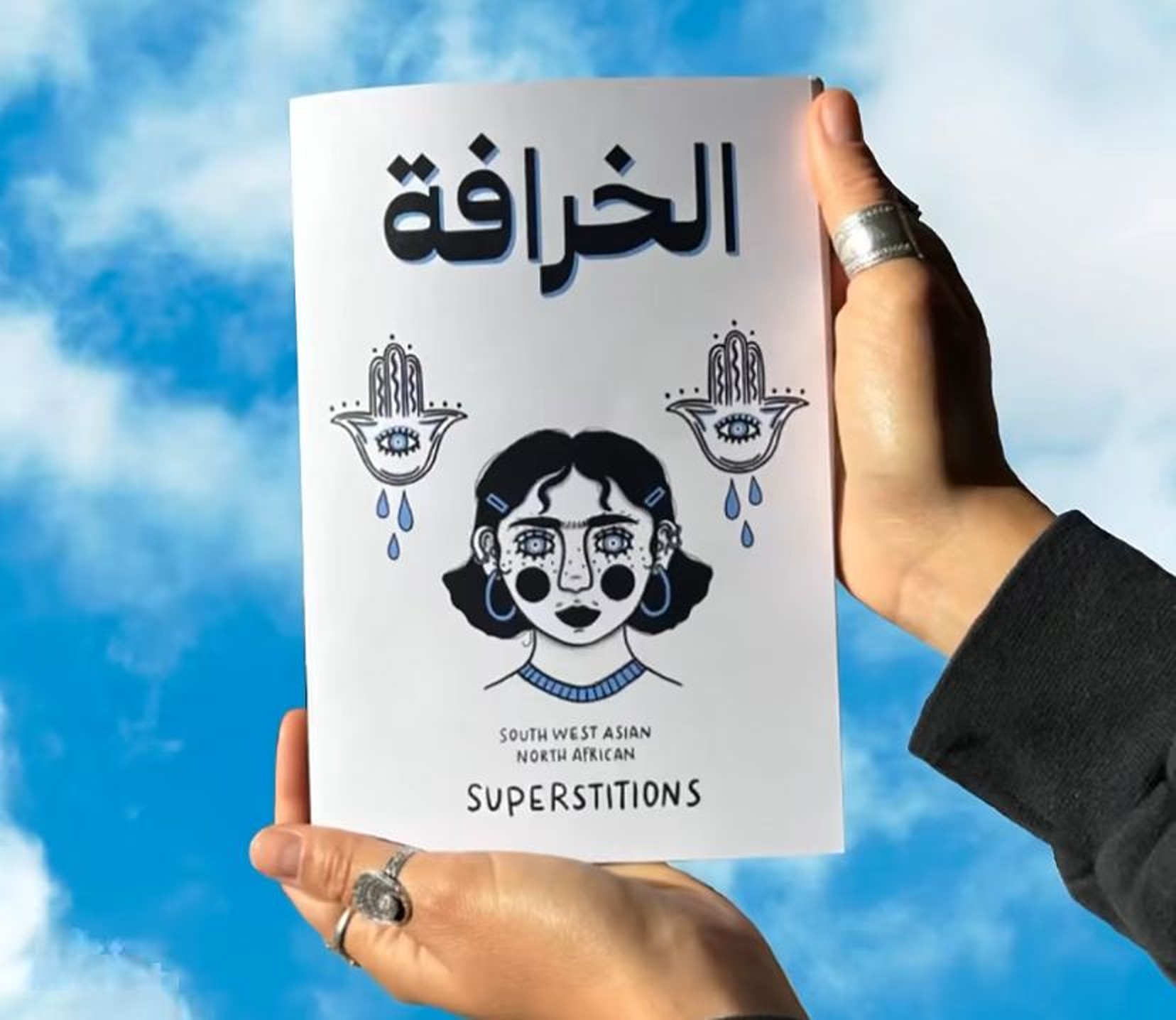





Comments (0)